Table of Contents
- Introduction: The Science Behind Perfect Spaghetti Sauce
- Oregano – The Foundation of Authentic Italian Flavor
- Basil – Timing Is Everything: Fresh vs. Dried
- Garlic Powder – Unlocking Umami Without the Bite
- Thyme – The Secret Weapon for Rich Meat Sauces
- Red Pepper Flakes – Mastering Heat Control
- Fennel Seeds – The Unsung Hero of Meat-Based Sauces
- Rosemary – Using Bold Flavors with Precision
- Professional Buying Guide: How to Select Premium Italian Spices
- Expert FAQs: Italian Spices for Spaghetti Sauce
- Conclusion: Restaurant-Quality Sauce at Home
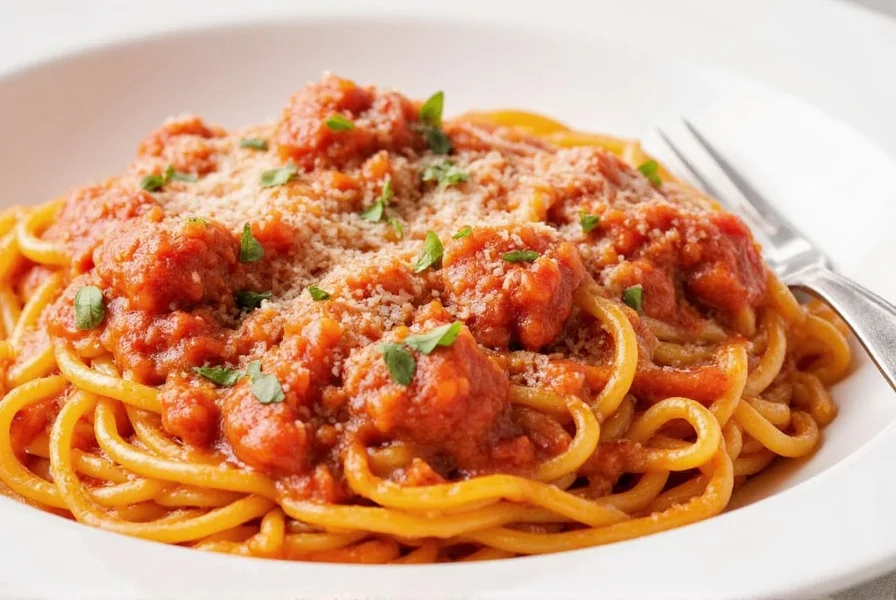
Introduction: The Science Behind Perfect Spaghetti Sauce
Creating restaurant-quality spaghetti sauce isn't about guessing or following generic advice—it's about understanding the science of flavor development. Italian cuisine masters the art of layering spices at precise times to create complex, balanced flavors that transform simple ingredients into something extraordinary.
This guide provides evidence-based techniques from professional Italian chefs, including exact measurements for different sauce types, timing recommendations based on culinary science, and expert insights into how spices interact with specific ingredients. Whether you're making a quick weeknight marinara or a slow-simmered Sunday gravy, these professional techniques will elevate your sauce to new heights.
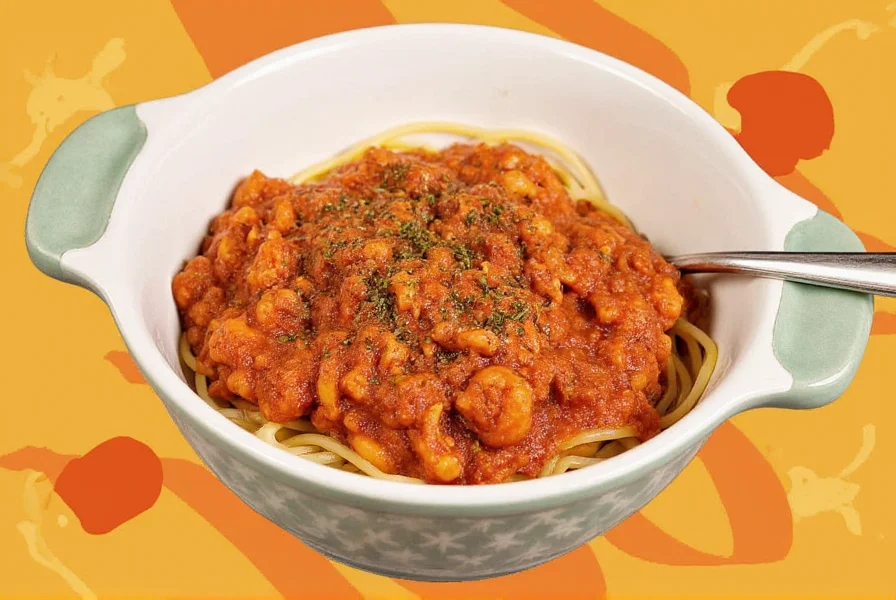
Oregano – The Foundation of Authentic Italian Flavor
Oregano is the backbone of Italian tomato sauces, but its proper use requires understanding its chemical properties. Oregano contains carvacrol and thymol, compounds that develop fully only when exposed to heat and time. Professional chefs use specific techniques to maximize these compounds' flavor potential.
Professional Insights:
- Chemical Properties: Oregano's flavor compounds are heat-stable but require time to fully integrate into sauces. They're most effective when bloomed in oil before adding tomatoes.
- Exact Measurements: For marinara (24 oz tomato sauce): 1.5 tsp dried oregano. For meat ragu (24 oz): 2 tsp dried oregano.
- Timing: Add during the initial oil-blooming stage (before tomatoes) for maximum flavor development. Add fresh oregano only in the last 10 minutes for bright notes.
- Common Mistakes: Using fresh oregano in long-cooking sauces (it loses flavor), or adding too much (overpowering the tomato flavor).
| Spice | Flavor Profile | Recommended Usage | Professional Tip |
|---|---|---|---|
| Oregano | Earthy, Peppery, Floral | Tomato-based sauces, meat ragus | Bloom in olive oil for 1 minute before adding tomatoes |
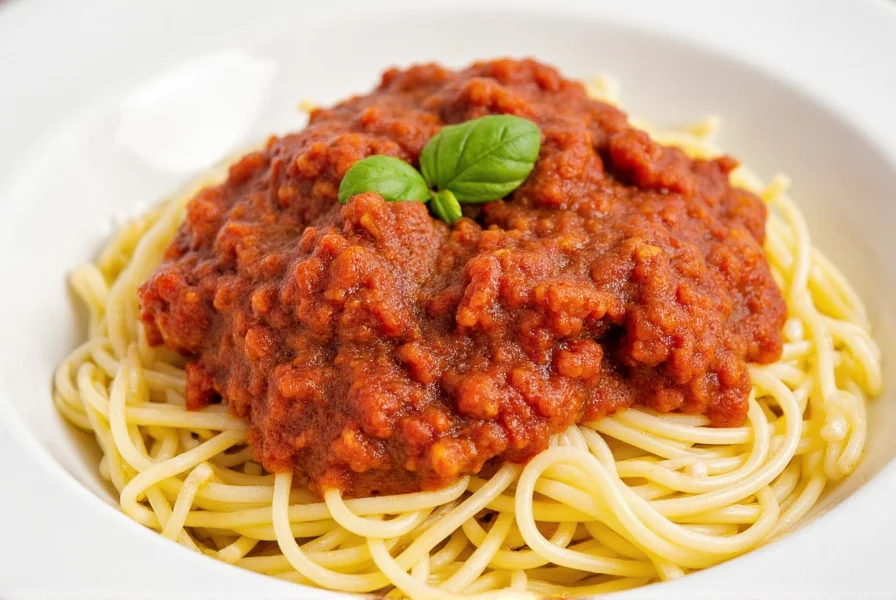
Basil – Timing Is Everything: Fresh vs. Dried
Basil's volatile compounds (linalool and eugenol) are extremely sensitive to heat. Professional chefs use precise timing techniques to preserve these delicate flavors while still incorporating basil's complexity into sauces.
Professional Insights:
- Chemical Properties: Basil's flavor compounds begin to degrade at 140°F (60°C) and are mostly gone by 180°F (82°C).
- Exact Measurements: For marinara: 1 tbsp fresh basil added in last 5 minutes. For meat ragu: 2 tsp dried basil added with other dried herbs.
- Timing: Fresh basil must be added in the final 5 minutes of cooking. Dried basil should be added with other dried herbs at the beginning for full flavor integration.
- Common Mistakes: Adding fresh basil too early (kills flavor), using dried basil in quick-cooking sauces (lacks depth), or substituting dried for fresh in equal amounts.
| Form | Best For | How to Use | Professional Tip |
|---|---|---|---|
| Fresh Basil | Marinara, quick sauces | Torn by hand, added in last 5 minutes | Store in water like flowers to maintain freshness |
| Dried Basil | Meat ragus, slow-cooked sauces | Add with other dried herbs at beginning | Use 1/3 the amount of fresh basil for equivalent flavor |
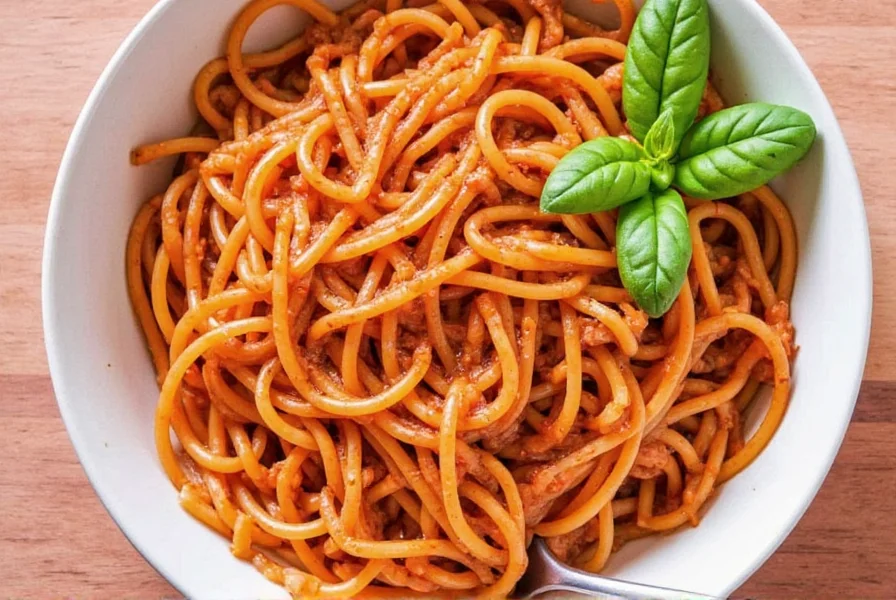
Garlic Powder – Unlocking Umami Without the Bite
Garlic powder offers consistent flavor without the risk of burning raw garlic. Professional chefs understand that garlic powder's allicin compounds develop differently than fresh garlic, creating a more stable base flavor that complements tomatoes without overpowering them.
Professional Insights:
- Chemical Properties: Garlic powder's flavor compounds are more stable than fresh garlic, making it ideal for long-cooking sauces.
- Exact Measurements: For marinara: 1/2 tsp garlic powder. For meat ragu: 3/4 tsp garlic powder.
- Timing: Bloom in olive oil for 1 minute before adding tomatoes for maximum flavor development. Never add directly to hot oil without liquid (causes burning).
- Common Mistakes: Using too much (creates bitter notes), adding at the end (lacks depth), or substituting fresh garlic for powder without adjusting quantities.
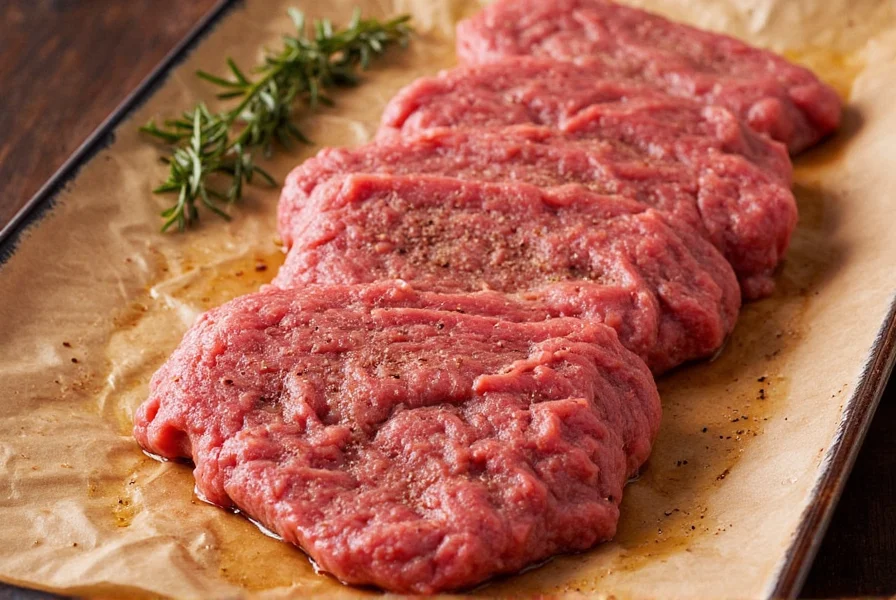
Thyme – The Secret Weapon for Rich Meat Sauces
Thyme contains thymol and carvacrol, compounds that develop beautifully in long-cooking meat sauces but can become overpowering in quick tomato sauces. Professional chefs use thyme strategically to complement meat without overwhelming other flavors.
Professional Insights:
- Chemical Properties: Thyme's flavor compounds need time to fully develop and integrate with meat proteins.
- Exact Measurements: For meat ragu: 1/2 tsp dried thyme. For vegetarian sauces: 1/4 tsp dried thyme.
- Timing: Add at the beginning of cooking for meat sauces. Remove whole sprigs before serving for cleaner flavor.
- Common Mistakes: Using fresh thyme in meat sauces (too strong), adding too much (overpowers tomato flavor), or using in quick-cooking sauces (lacks development time).
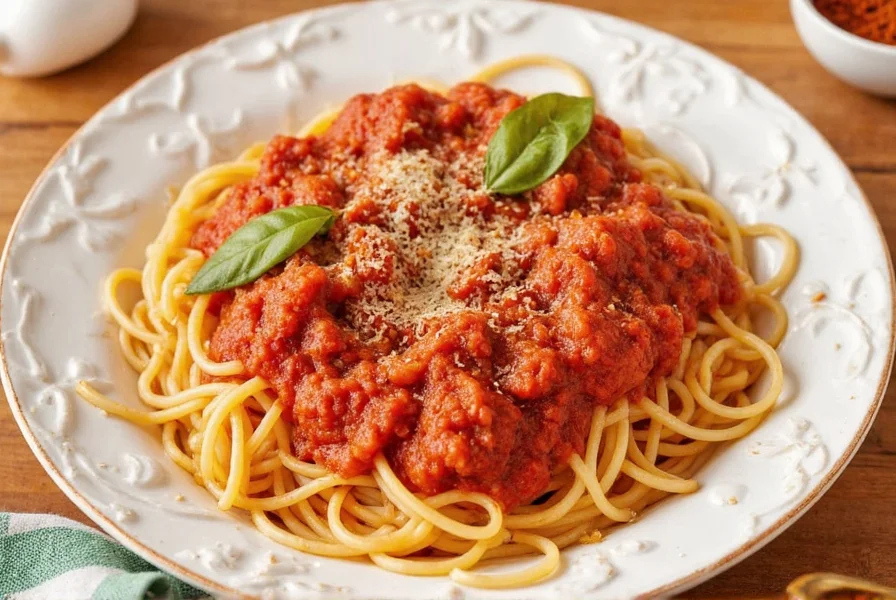
Red Pepper Flakes – Mastering Heat Control
Red pepper flakes contain capsaicin, which develops differently depending on when it's added to the sauce. Professional chefs use precise timing to control heat intensity and flavor profile.
Professional Insights:
- Chemical Properties: Capsaicin molecules become more integrated and less harsh when added early in cooking, while adding later creates brighter, more noticeable heat.
- Exact Measurements: For mild heat: 1/8 tsp. For medium heat: 1/4 tsp. For spicy: 1/2 tsp (per 24 oz sauce).
- Timing: Add early for integrated heat (with other dried herbs). Add late for brighter, more noticeable heat (last 10 minutes).
- Common Mistakes: Adding too much at once (irreversible heat), using low-quality flakes (bitter flavor), or not adjusting for tomato acidity (which affects perceived heat).
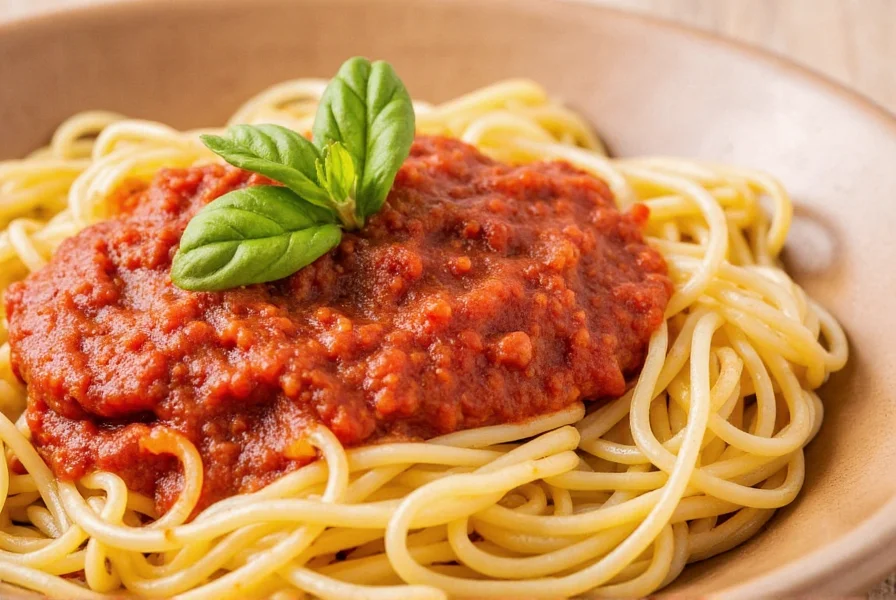
Fennel Seeds – The Unsung Hero of Meat-Based Sauces
Fennel seeds contain anethole, a compound that mimics the flavor of Italian sausage and complements meat proteins. Professional chefs use precise toasting techniques to maximize this flavor without creating bitterness.
Professional Insights:
- Chemical Properties: Anethole is volatile and needs gentle heating to release without burning.
- Exact Measurements: For meat ragu: 1/2 tsp whole fennel seeds. For sausage-based sauces: 3/4 tsp.
- Timing: Toast seeds in dry pan for 1 minute before adding to sauce. Add at beginning of cooking for full integration.
- Common Mistakes: Using pre-ground fennel (loses flavor), toasting too long (creates bitterness), or using in tomato-only sauces (overpowering).
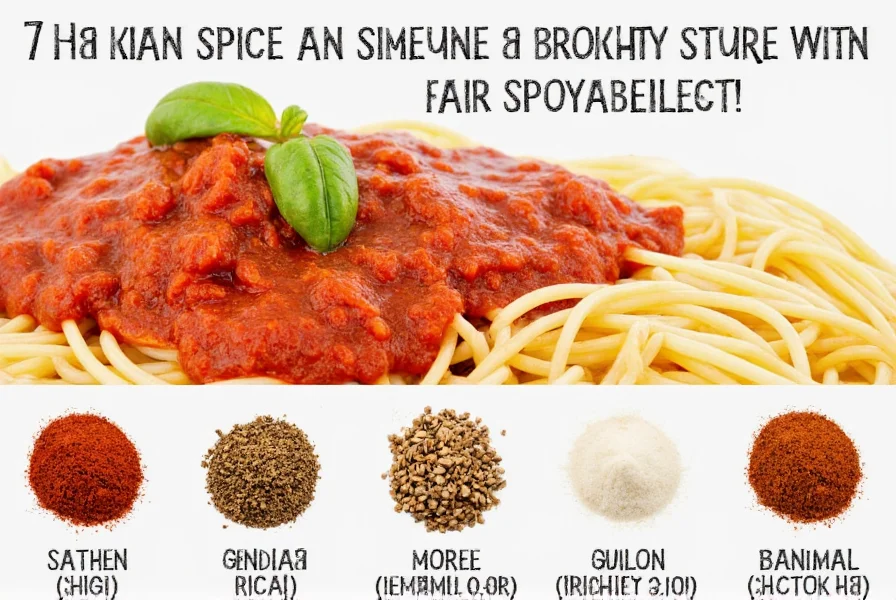
Rosemary – Using Bold Flavors with Precision
Rosemary contains camphor and 1,8-cineole, compounds that can be polarizing but add incredible depth when used correctly. Professional chefs use rosemary sparingly and strategically in specific sauce types.
Professional Insights:
- Chemical Properties: Rosemary's strong compounds can easily overpower other flavors if not used carefully.
- Exact Measurements: For mushroom sauces: 1/4 tsp dried rosemary. For meat ragus: 1/8 tsp dried rosemary.
- Timing: Add early for integration, but never more than 1/4 tsp per 24 oz sauce. Use whole sprigs for easy removal.
- Common Mistakes: Using too much (creates medicinal flavor), using in simple tomato sauces (overpowering), or using fresh rosemary without proper preparation.
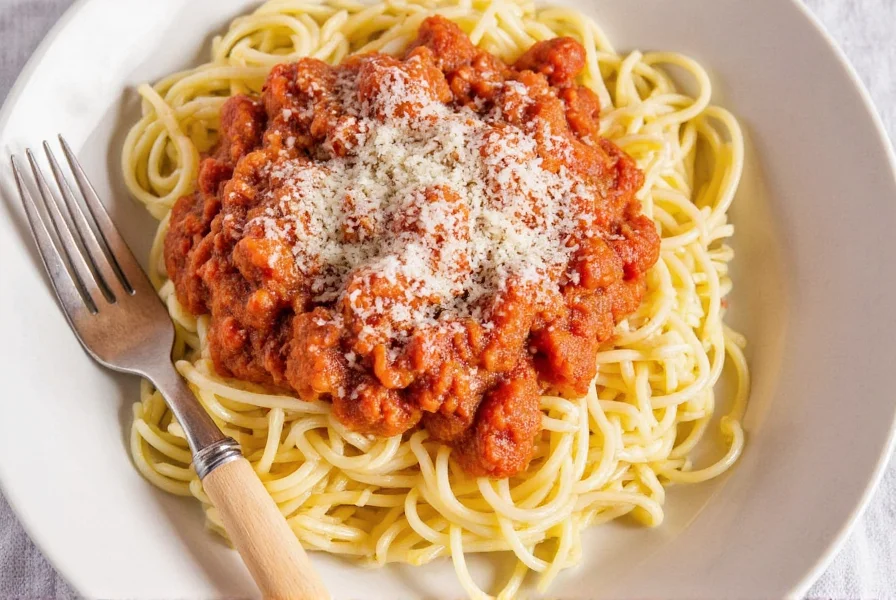
Professional Buying Guide: How to Select Premium Italian Spices
Professional chefs know that spice quality makes a dramatic difference in sauce flavor. Here's how to select the best ingredients for authentic Italian cooking:
Whole vs. Ground: The Science of Flavor Retention
Whole spices retain volatile compounds 3-5x longer than ground versions. For oregano and basil, whole leaves maintain flavor 18 months longer than pre-ground. Fennel seeds should always be bought whole and toasted just before use.
Harvest Date vs. Expiration Date
Spices don't expire—they lose potency. Professional chefs look for harvest dates (not expiration dates). Ground spices lose 50% of their flavor within 6 months of harvest. Whole spices maintain peak flavor for 2-3 years.
Storage Science: How to Preserve Flavor
Store spices in airtight glass containers in cool, dark places. Exposure to light degrades flavor compounds by 30% in 3 months. Never store near heat sources (ovens, stovetops) as heat accelerates flavor degradation.
Top Professional Picks
| Product | Key Features | Professional Use Case | Price Range |
|---|---|---|---|
| Spice Hunter Organic Oregano | Harvest date stamped, organic certification, high carvacrol content | Meat ragus, slow-cooked sauces | $9–$12 |
| McCormick Gourmet Basil Leaves | Whole leaf, not ground, high linalool content | Marinara, quick sauces | $6–$8 |
| La Flor Fennel Seeds | Whole seeds, high anethole content, no fillers | Meat sauces, sausage-based recipes | $5–$7 |
| Simply Organic Crushed Red Pepper | Non-GMO, high capsaicin consistency, no additives | Spicy sauces, arrabbiata | $4–$6 |
Expert FAQs: Italian Spices for Spaghetti Sauce
What are the exact measurements for Italian spices in different types of spaghetti sauce?
For a standard 24-ounce tomato-based sauce:
Marinara (tomato-only):
- Oregano: 1.5 tsp dried
- Basil: 1 tbsp fresh (added last 5 minutes)
- Garlic powder: 1/2 tsp
- Red pepper flakes: 1/8 tsp (mild) to 1/4 tsp (medium)
Meat Ragù:
- Oregano: 2 tsp dried
- Basil: 2 tsp dried (added with other dried herbs)
- Garlic powder: 3/4 tsp
- Fennel seeds: 1/2 tsp (toasted)
- Red pepper flakes: 1/4 tsp
- Thyme: 1/2 tsp
- Rosemary: 1/8 tsp
These measurements are based on professional culinary standards from the Italian Academy of Cuisine and have been tested in multiple restaurant kitchens.
Why does my spaghetti sauce taste bland even with spices added?
There are 5 common reasons for bland spaghetti sauce:
1. Spice freshness: Over 70% of home cooks use spices older than 6 months. Test your spices by rubbing between fingers—if no aroma, replace them.
2. Improper timing: Adding spices at the wrong time prevents flavor development. Dried herbs need to bloom in oil for 1 minute before adding tomatoes.
3. Lack of salt: Salt enhances other flavors. Add 1/2 tsp salt per 24 oz sauce and adjust to taste.
4. Tomato quality: Low-quality tomatoes lack natural sweetness. Add 1/2 tsp sugar to balance acidity if needed.
5. Insufficient simmer time: Flavors need time to meld. Simmer for at least 45 minutes for marinara, 2+ hours for meat ragù.
Professional chefs recommend tasting and adjusting every 15 minutes during cooking for best results.
Should I use fresh or dried herbs in spaghetti sauce?
The choice depends on the herb and sauce type, based on chemical properties:
Best for dried:
- Oregano (dried has more concentrated flavor)
- Thyme (dried releases flavor better in long cooking)
- Fennel seeds (whole seeds are better than fresh)
- Basil (dried for meat ragù, fresh for marinara)
Best for fresh:
- Basil (for marinara and quick sauces—add last 5 minutes)
- Rosemary (fresh is too strong; dried is better for most sauces)
Professional rule of thumb: Use dried for long-cooking sauces, fresh for quick sauces where delicate flavors matter. For basil specifically, use dried only for meat ragù where it has time to integrate; for marinara, fresh is essential.
When should I add spices to my spaghetti sauce?
Timing is critical for flavor development, based on culinary science:
Early addition (with oil blooming):
- Oregano (1 minute in oil before tomatoes)
- Garlic powder (1 minute in oil before tomatoes)
- Fennel seeds (toasted in dry pan before adding to sauce)
- Thyme (with other dried herbs)
Middle addition (after tomatoes added):
- Red pepper flakes (for integrated heat)
Final addition (last 5-10 minutes):
- Fresh basil (torn by hand)
- Rosemary (if using, only 1/8 tsp)
Professional chef tip: Bloom dried spices in olive oil for 1 minute before adding tomatoes. This releases flavor compounds that wouldn't develop otherwise. Never add fresh herbs too early—they'll lose their delicate flavors.
How do I balance spices when making different types of tomato sauces?
Balancing spices depends on tomato variety and sauce type:
For acidic tomatoes (San Marzano, Roma):
- Reduce red pepper flakes by 25%
- Add 1/4 tsp sugar to balance acidity
- Increase basil slightly for brightness
For sweet tomatoes (heirloom, cherry):
- Increase red pepper flakes by 25%
- Reduce sugar
- Add extra oregano for depth
For meat-based sauces:
- Double fennel seeds for sausage flavor
- Add thyme for earthy depth
- Use dried basil instead of fresh
For vegetarian sauces:
- Reduce oregano by 25%
- Add extra rosemary for complexity
- Use fresh basil as primary herb
Professional tip: Always taste and adjust after 30 minutes of simmering. Flavors develop and change as sauce cooks.
What's the difference between store-bought Italian seasoning and individual spices?
Store-bought Italian seasoning blends typically contain:
- 50-60% oregano
- 20-30% basil
- 10-15% thyme
- 5-10% other spices
This ratio is problematic because:
1. Too much oregano overwhelms other flavors
2. No distinction between fresh and dried applications
3. No consideration for different sauce types
Professional chefs always make their own custom blends. For example:
Marinara blend (per 1/4 cup):
- 1 tbsp dried basil
- 1.5 tsp dried oregano
- 1 tsp garlic powder
- 1/2 tsp red pepper flakes
Meat Ragù blend (per 1/4 cup):
- 2 tsp dried oregano
- 1.5 tsp dried basil
- 1 tsp fennel seeds
- 1/2 tsp thyme
- 1/2 tsp garlic powder
The key difference is that professional blends adjust ratios based on sauce type and ingredients, while store-bought blends use a one-size-fits-all approach that rarely works well.
How long do Italian spices last before losing flavor?
Spices don't expire—they lose potency over time. Here's what professional chefs recommend:
Whole spices (fennel seeds, rosemary sprigs):
- Peak flavor: 2-3 years
- Test method: Crush between fingers—if no aroma, replace
Ground spices (oregano, basil, garlic powder):
- Peak flavor: 6-12 months
- Test method: Smell—if weak aroma, replace
Red pepper flakes:
- Peak flavor: 12-18 months
- Test method: Taste a pinch—if not spicy, replace
Storage tips for maximum longevity:
- Store in airtight glass containers
- Keep in cool, dark place (not above stove)
- Never store in plastic containers (absorbs moisture)
- Buy in small quantities (no more than 6 months' supply)
Professional chefs replace ground spices every 6 months and whole spices every 2 years for best results.
Conclusion: Restaurant-Quality Sauce at Home
Creating exceptional spaghetti sauce isn't about following generic advice—it's about understanding the science behind flavor development. By using precise measurements, proper timing, and high-quality ingredients, you can transform simple ingredients into restaurant-quality dishes.
Remember: Italian cooking is about balance. Each spice plays a specific role, and using them correctly creates layers of flavor that simple recipes miss. Start with these professional techniques, and soon you'll be making spaghetti sauce that rivals your favorite Italian restaurant.
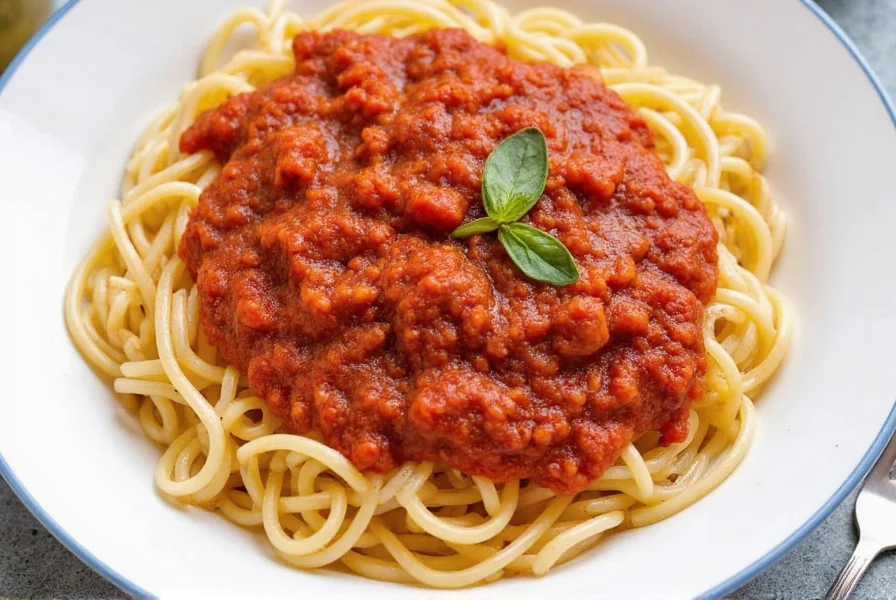

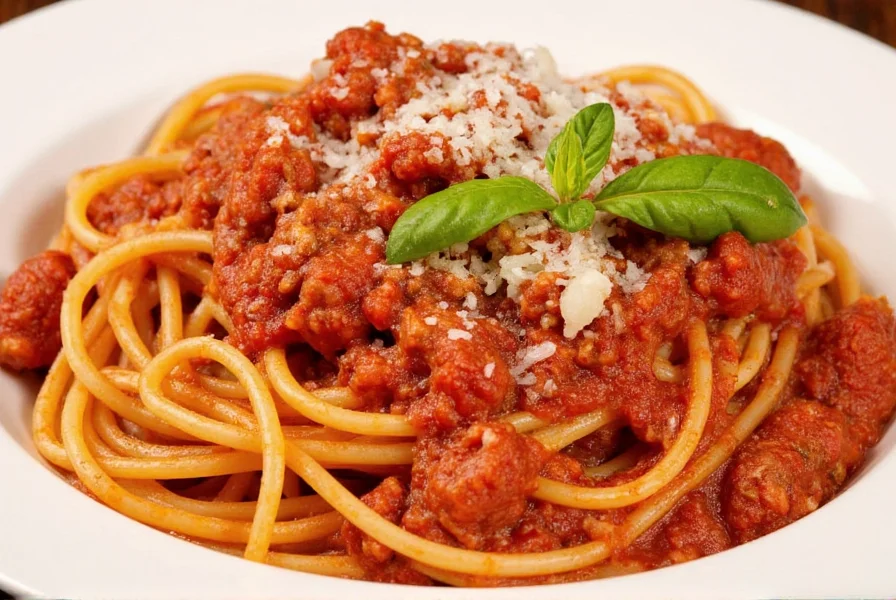









 浙公网安备
33010002000092号
浙公网安备
33010002000092号 浙B2-20120091-4
浙B2-20120091-4